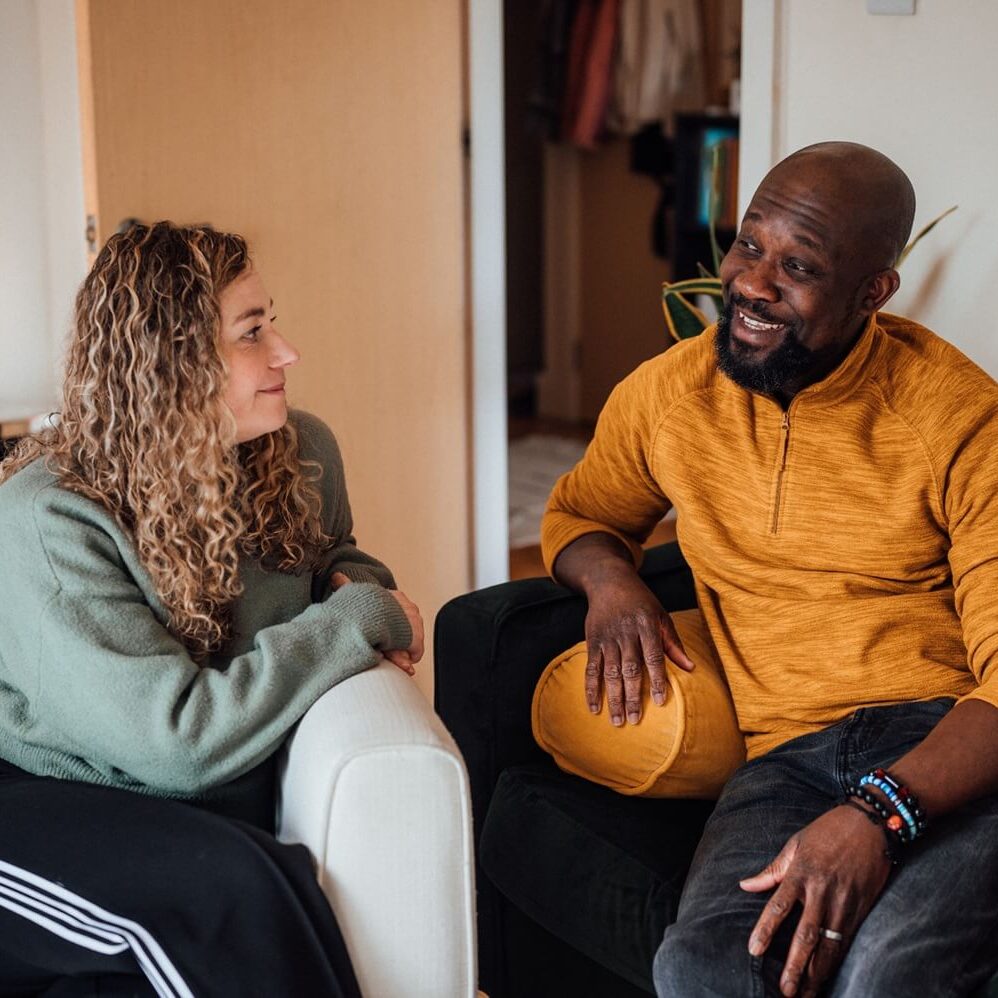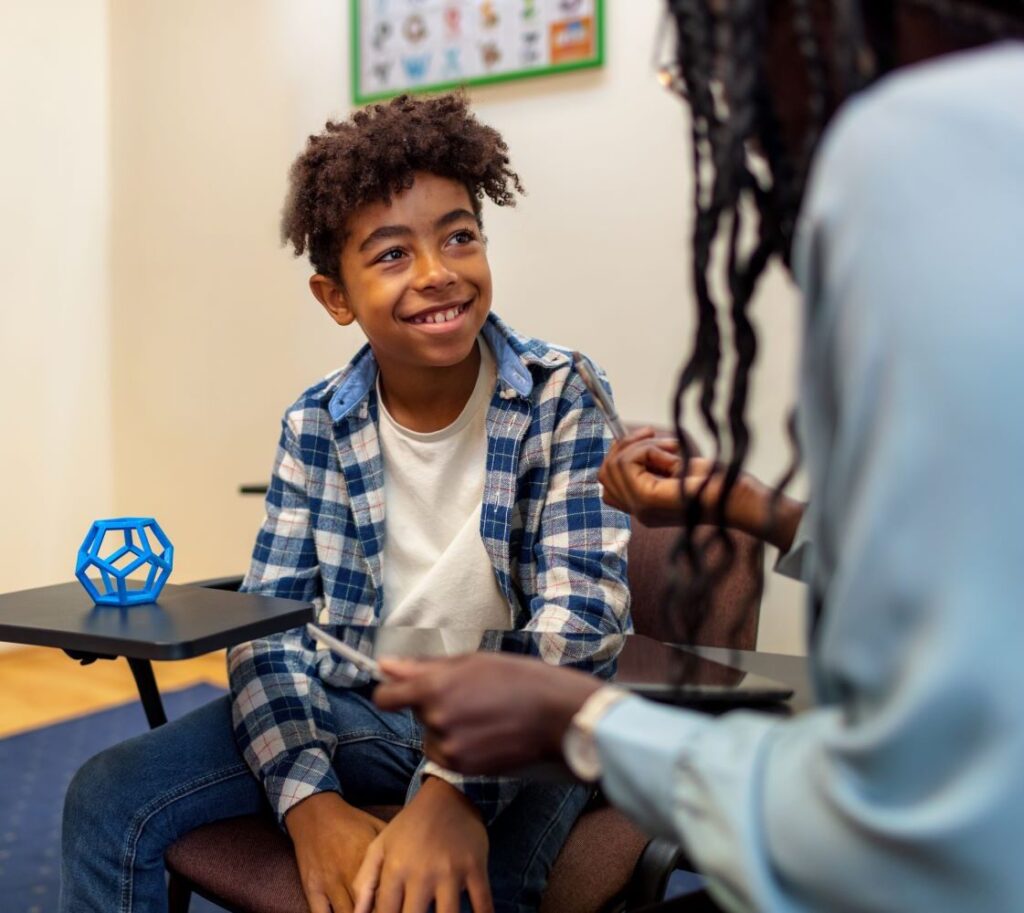Terminology and language relating to SEND (special educational needs and disabilities) changes frequently. If you’re concerned about what language to use, we’ll do our best to help you have sensitive, more confident conversations about SEND.
We’ll look at:
- how to make sure you’re using the right language for the individual you’re speaking to
- when using very specific language can make a difference
- what to do when a specific diagnosis might not tell the full story about a person’s needs.
Firstly, it’s important to recognise that there will likely be a bit of difference in the particular language people use to define themselves. How you might choose to define yourself is entirely up to you, but as it’s personal to you, it’s important to be mindful that this might be different for somebody else.

Just ask
Just because someone has had a particular diagnosis, it doesn’t necessarily mean that’s how they want to be identified. Instead, let that person tell you what they’re most comfortable with.
If you don’t know the language or terminology to use when you’re in a conversation, it’s absolutely fine to ask that question. Family Action services that work with people who have experience living with SEND say that very often, these individuals would prefer to have the conversation rather than shying away from it – although of course this will not apply to everyone.
It’s also okay to be corrected. If someone says, “Actually, I’d prefer to be described as…”, all you need to do is acknowledge what they’ve said, apologise, and then carry on with the conversation. An example of this is a person with autism who, when speaking to a Family Action service, asked to be referred to in this way instead of as an autistic person, which is generally the preferred terminology.
You may feel uncomfortable asking about the correct language to use – for example, if you think that having to ask shows you don’t know something you feel you should know. But this isn’t the case at all. It’s more important to remember that you’re talking to an individual who may want to be identified in a different way to the most commonly used terminology.
The difference between medical terminology and personal preference
The one situation where you might need to use very specific language regardless of personal preference is if you are looking for a particular diagnosis. Often, you’ll only be able to get the support you need for yourself or your child with that diagnosis in place.
We’ll cover getting a SEND diagnosis in a future article, but in the meantime try contacting your nearest Special Educational Needs and Disabilities Information, Advice and Support (SENDIAS) service for support with this. Use our service finder to see what’s near you. If there isn’t a Family Action SENDIAS service in your area, you can find your local information, advice and support service here.
If you’re looking for a definition for a certain word, phrase or acronym, see our related article: Making sense of SEND language – a glossary.
A diagnosis can be very useful when it comes to getting support – but the label that comes with the diagnosis doesn’t necessarily tell you everything you need to know.
When the language used doesn’t tell the full story
Using the right language often helps when getting a diagnosis, and a diagnosis can be very useful when it comes to getting support. But the label that comes with the diagnosis doesn’t necessarily tell the full story. Autism is a good example of this, since two autistic children of the same age and sex may have very different needs and be coping very differently.
Sensory needs are just one example of something that may have a huge impact on the requirements of autistic children:
- Hyposensitivity: Hyposensitive individuals need strong sensory input, so they will be drawn to bright lights and loud sounds and music. Punching and pushing are other ways of getting the sensory stimulation they need.
- Hypersensitivity: Hypersensitive individuals experience sensory overstimulation very easily. Places where there is a lot going on (for example, a shopping centre with lots of people, conversations, music, food smells or scented candles and perfumes) can be too much. Even a light touch can feel like being hit with an object to someone who is hypersensitive, and the ticking of a clock on the wall can be emotionally deregulating.
You can see that the diagnosis of autism by itself isn’t enough for your child’s school to know what extra support they may need. This is why it’s important to be able to explain what your child needs to be as comfortable as possible in the school environment.
This is where you as the parent come in, as no one knows your child like you do.

You are the expert when it comes to your child
When it comes to the needs of your individual child, no one knows them like you do as their parent or caregiver. Whether they have that diagnosis or not, think carefully about what it is that your child needs, how they are most comfortable and what helps them feel regulated emotionally.
It may feel overwhelming if you’re sitting in a room with educational or clinical psychologists and perhaps don’t feel like you’re speaking the same language and using the same terminology. But try to have the confidence that the system and the people you may be working with should know that you’re the expert in what your child needs – although, in reality, it may not always feel like this.
If you have a clear understanding of your child’s needs, you’ll be better able to advocate for them and explain what would help them in their daily life and what might set them back.
More information and support
Use our service finder to find your nearest Family Action Special Educational Needs and Disabilities Information, Advice and Support (SENDIAS) service. If there isn’t a Family Action SENDIAS service in your area, you can find your local information, advice and support service here.
Other organisations you may find helpful are:
Your local authority will publish information on its website about the local offer. The local offer explains the support and facilities that families can expect to find in their area for children and young people aged 0-25 who have special educational needs and disabilities. The information should cover education, health and social care support, and services. It’s not a guarantee that a particular service will be available, but it should be a useful guide to what you can expect to find in your area, and how you can access that service.
You may also find support groups on social media relevant to your and your family’s needs. Try doing a quick search on Google or your preferred social media platform to see what’s out there. Explore a few options and figure out what works for you – it’s a very personal thing, but you may find the ideal group for you and your family.

Call, text, email or web chat FamilyLine
If you’re feeling overwhelmed, worried or upset about any aspect of your family life, FamilyLine is here for you. We offer free emotional support and guidance on family relationships, conflict, parenting, caring, financial worries and more.
Contact FamilyLine











